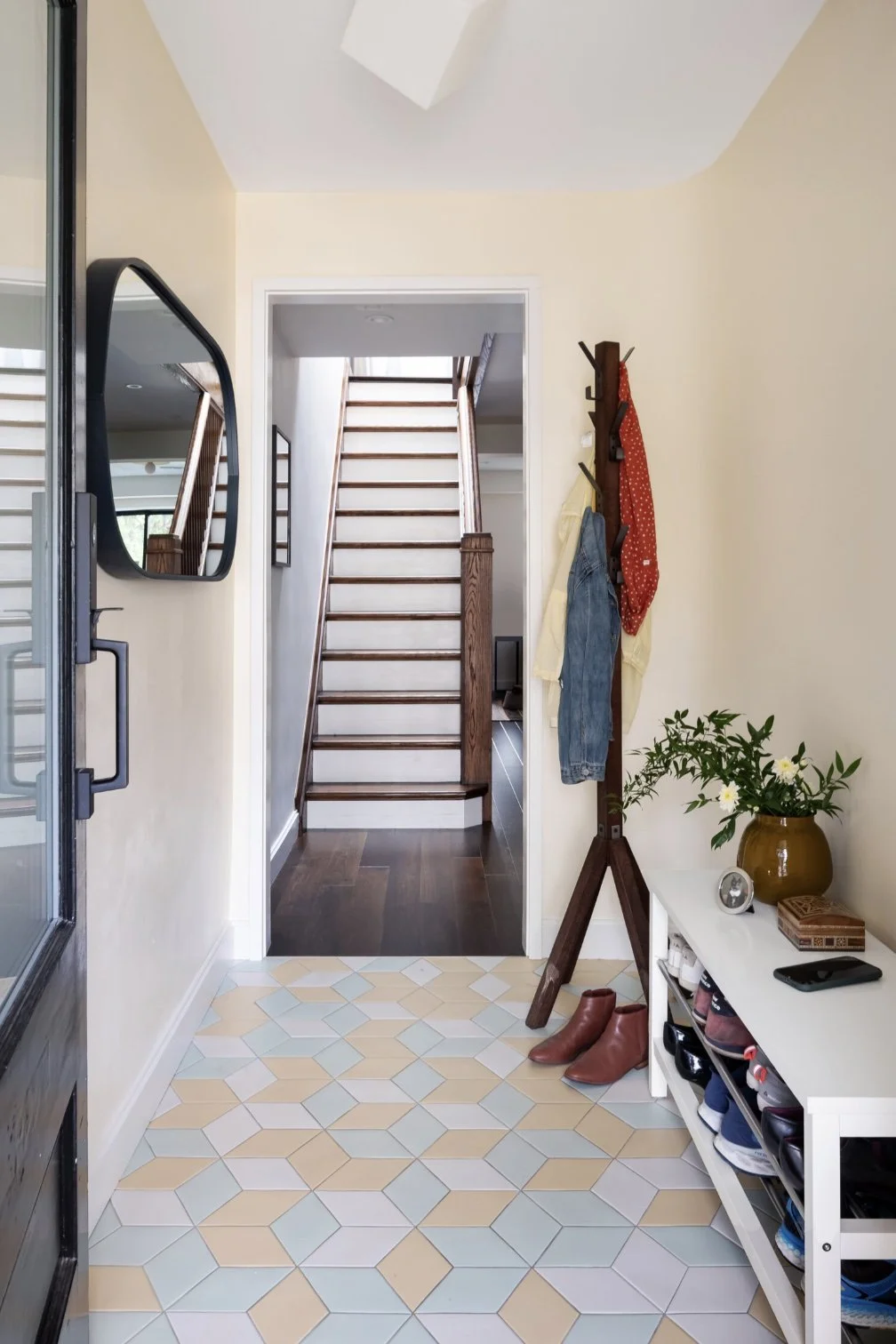ENTRANCE ROOM
Coming and going into a home requires a space that can properly handle the transition from the outside to the interior, either more formally with a foyer at the front, or more casually with a mudroom at the back.
Foyer in our Victor Victorious project
WHO’S THERE?
A foyer should be light-filled but not on public display. Some glass is also necessary so that a person can see who is at the door before opening it. This can be done by integrated glass directly into the door, in sidelights, or as a separate window. Privacy can be maintained with simple window treatments or with specialty glass, for example beveled, ribbed, or stained.
It’s also important that when the door is open, the view does not reveal the private life of the home. Therefore, the layout should be made with walls obstructing interior rooms, except that often a view onto the stairs is desirable for those who inside wish to peak from a distance.
COATS & BOOTS
A place for coats and shoes should be immediately in view upon entering. Generally, hooks and boot trays are less fussy than closets, though some people prefer to hide things away behind doors. For our part, we aren’t troubled by the view of such things, particularly when the entrance room is mostly out of view from the adjacent living space.
In front of the coat hooks or closet, it’s helpful to have a clear area of about five feet in diameter, so that people can put on their outerwear comfortably. It’s also nice to have a chair or bench in this spot, which can double as a place to wait or to hold packages.
SPOTS FOR THE MISC.
There are lots of transient objects that require a place to reside in the entrance room. A shelf is ideal for many of them, such as keys and mail. This could be provided by the top of a cabinet that has drawers for mittens, bags, and hats, etc.
It’s also convenient to have a spot for larger items, like strollers, scooters, or hockey bags. An empty corner is an ideal location for such things. If space allows, it may even be worth building in cubbies, especially to accommodate the needs of school-age children.
MATERIALS
Since the entrance room will see a lot of heavy use, use durable materials, like tile on the floor or wood wainscotting on the walls. At the foyer, take care to make an impression with nice fixtures, patterns, and colours, and consider hanging a beautiful wallpaper.
Foyer for a typical Toronto semi-detached house
In summary:
At the entrance to a home, make a light-filled room that controls for privacy to the interior. Make a spot for coats and boots facing a clear area of about five feet in diameter. Place a shelf or low cabinet next to the door for everyday things. Provide an empty corner that can accommodate larger items or build in a set of cubbies. Use durable materials on the floor and walls to help resist wear and tear, and make your foyer especially inviting.
The ideas above are based on A Pattern Language: Towns, Buildings, Construction by Christopher Alexander, et al. Oxford University Press, 1977, specifically pattern: #130 Entrance Room.


